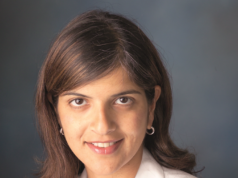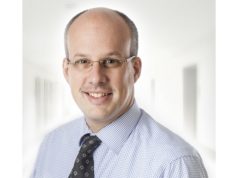
More than 25% of the adult population is affected by varicose veins, with more than a 15% prevalence of chronic venous insufficiency (C3–C6), which induces a considerable burden on the health of these patients. The Bonn Vein Study found that 21% of the adult population had venous reflux >0.5s. For several reasons, such as low awareness, difficulty in diagnosing, and lack of recognition of the disabling nature of this disease, the severity of the health problems caused by chronic venous disease is poorly acknowledged, and it has received, until now, little recognition from public health care systems, which focus their attention on lifethreatening conditions, Armando Mansilha writes.
We have to highlight the importance and necessity of making better known the severity of the problems caused by chronic venous disease and its inexorable progression, in order to facilitate and optimise its detection and management.
Chronic venous disease is caused by venous hypertension due to either reflux, obstruction, or both. As the pathophysiology of the disease and its natural history are still not completely understood, its management has been empirical for years. Venous ulcers are the result of a complex cascade of cellular events, encouraged by a genetic predisposition and environmental factors, and initiated by venous hypertension, which eventually becomes chronic if left untreated. Haemodynamic changes lead to disease progression, but convergent data highlight that some patients will develop venous leg ulcers, while others will not. We are still at the beginning of our understanding of the pathophysiology of the progression of chronic venous disease to venous ulcers; much remains to be investigated concerning the biological and cellular processes affecting both the venous valves and walls. The factors, mechanisms, and markers underlying the development of chronic venous disease, such as genetic, cellular and molecular ones, as well as the possible implication of microscopic valve alterations are still points not completely solved.
There are important questions to be answered about our daily practice: How do varicose veins develop? How does chronic venous disease progress towards chronic venous insufficiency? What are the risk factors that have been identified? Is there a benefit of early intervention in venous pathology?
So far, data on the progression of venous pathology are scarce. The most remarkable publication in this field was the Edinburgh Vein Study. The aims of this study were to describe the progression of trunk varicose veins and chronic venous insufficiency in the general population, to identify important lifestyle and clinical prognostic factors, and to determine the relationship between venous reflux and progression. Nearly half of the general population with chronic venous disease deteriorated during 13 years, and almost one third with varicose veins developed skin changes of chronic venous insufficiency, increasing their risk of ulceration. Age, family history of varicose veins, history of deep venous thrombosis, being overweight, and superficial reflux, especially in the small saphenous vein and with deep reflux, were identified as the most important factors that might influence the risk of progression.
As emphasised during last annual meeting of the European Venous Forum in Porto, the take-home messages were:
- Taking into account the current demographic characteristics of the Westen World, with an ageing population and an ongoing obesity epidemic, it is predictable that the prevalence of chronic venous disease will rise.
- Chronic venous disease progresses in >50% of patients, there are known risk factors for progression but is still difficult to predict which patients will aggravate, and it is still difficult to predict how fast it will aggravate.
- Better awareness is needed in order to prevent patient morbidity and excessive economic costs.
- More long-term follow-up studies are needed to establish how to predict the risk of progression to more advanced stages of chronic venous insufficiency.
Armando Mansilha is a professor at the University of Porto, Porto, Portugal












